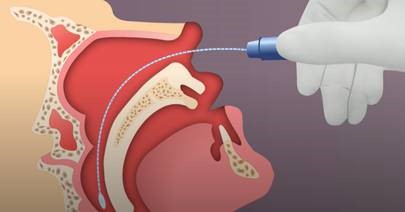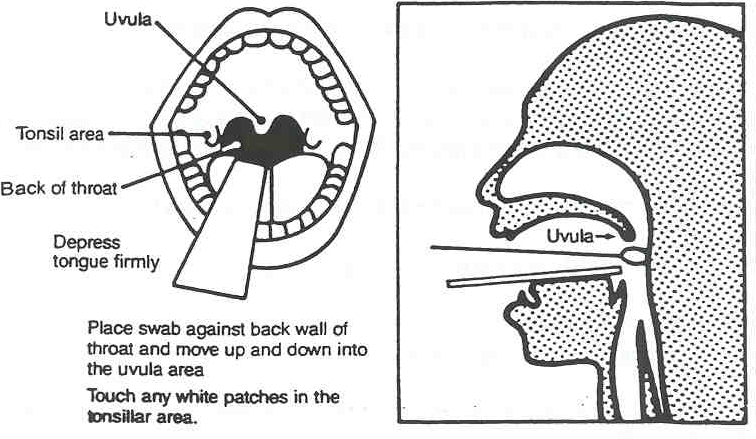COVID-19 collection
COVID-19 collection-14315
Visit the CDC or MDH website for more information as it becomes available.
Contact MDH at (651) 201-5414 or (877) 676-5414 for consultation and questions.
2019 Novel Coronavirus (COVID-19), NAA
Coronavirus
CoV
COVID-19
nCoV
SARS-CoV-2
Detection of SARS-CoV-2 to assist in the diagnosis of COVID-2019 infections
For medical purposes only; not for travel screening
Please have patient blow their nose prior to NP and nasal collections. Excessive mucus is known inhibitor/interfering substance for molecular testing.
There are no food or drink restrictions prior to collection of nasopharyngeal or oropharyngeal samples for COVID-19 testing
Nasal or Oropharyngeal - (Allina Health Clinic Ambulatory patients only)
COVID-19/Coronavirus sample collection kit containing viral transport media (VTM), universal transport media (UTM), or phosphate buffered saline (PBS).
Kits have been assembled by the Central Lab to include an NP or OP swab and transport media. Note that the contents of the kits may vary as supply inventory is fluctuating.
Effective 11/2022 - For Allina Health Clinic Ambulatory patients only:
Hologic Direct Load Tube
Use the mini-tip NP swab included in the COVID-19 test kit.
- Tip the patient’s head back.
- Gently insert the NP swab into the nostril parallel to the palate (not upwards) until resistance is encountered or the distance is equivalent to that from the ear to the nostril of the patient, indicating contact with the nasopharynx.
- If any resistance is met in the passageways, do not force the swab; back off and try reinserting it at a different angle, closer to the floor of the nasal canal, or try the other nostril.
- Gently rub and roll the swab for 10-15 seconds while the swab is in contact with the nasopharyngeal wall.
- The CDC recommends leaving the swab in place for several seconds to absorb secretions.
- Slowly remove the swab and place in the transport medium.
- Break the swab shaft so that it fits into the medium container and recap tightly.
- Label the specimen appropriately. Document the source “NP” on the label.
- Request that the patient reapply their mask.
New England Journal of Medicine video on NP swab collection: Nasopharyngeal Swab Collection Video
For Allina Health Clinic Ambulatory patients:
The Hologic Direct Load Tube allows for Nasal/OP collection using the pink proprietary swab.
Nasal collection
- Insert swab in one nostril 1/2”-3/4” until swab tip is no longer visible.
- Rotate the swab using moderate pressure along the nostril wall at least 4 times.
- Complete the collection by swabbing the other nostril in the same fashion.
- Uncap the transport media, insert the swab into the media, break swab against the tube at the score line, recap.
OP Collection
- Carefully swab both sides of the posterior pharyngeal wall while rotating the swab.
- Avoid touching the cheek(s) or tongue.
- Uncap the transport media, insert the swab into the media, break swab against the tube at the score line, recap.
COVID-19 sample collection kit
Hologic Direct Load Tube - Allina Health Clinic Ambulatory Patients only
Bronchial washings or bronchoalveolar
Sputum-only collect sputum if patient has a productive cough or it is being collected for other clinical reason
Oropharyngeal swab
Swab placed in phosphate buffered saline (PBS)
Bronchial specimens/sputum
Screw cap plastic container (sterile); do not add viral transport media
Oropharyngeal (OP) swab:
- Ask the patient to tilt head back, open mouth wide, breathe deeply, and say "ah".
- Extend the swab to the back of the oral cavity, being careful not to touch lips, walls of mouth, uvula, or tongue.
- Rubbing the swab over both tonsillar pillars and posterior oropharynx. Avoid touching the tongue, teeth, and gums.
- Place the swab into the provided transport media
- Grasp the top of the swab and bend within the media container until the shaft breaks. If there is no indicator line, bend within the media container until the shaft breaks.
- Break the shaft short enough to fit completly into the media container.
- Replace teh media cap and screw on securely. Label with the OP source
Sputum:
Collect only if the patient has a productive cough, or it is being collected for other clinical reasons
Swab placed in phosphate buffered saline (PBS)
Screw cap plastic container (sterile)
Allina Health Laboratory:
Covid -19 Sample kit
- Refrigerated (preferred) - 72 hours
- Frozen
Hologic Direct Load Tube - (Allina Health Clinic Ambulatory)
- Refrigerated - 6 days
- Ambient - 6 days
LabCorp:
Frozen (preferred) - specimens must be frozen if they will not reach the testing laboratory within 72 hours of collection
Refrigerated - 72 hours
Ambient - 24 hours
- Swabs with cotton tips
- Swabs with wooden shafts
- ESwabs
- Dry swabs
- Swabs with calcium alginate tips
- Nasal/nares swabs - will be referred to LabCorp
- Leaking specimen(s)
Select samples may be referred to LabCorp
MDH
Varies/multiple
Not detected
Nasopharyngeal (NP) vs oropharyngeal (OP) collections
There is a severe swab shortage. When an NP swab isn’t available, an OP or anterior nares swab is acceptable. The OP swabs can also be used for anterior nares but not for NP (there is no support for using an OP swab as an NP swab).There are some short swabs that can also be used for nares but are too short for OP.
For consistency’s sake and per Mayo’s recommendation for OP as the next step, Allina Health is using OP when NP isn’t available.
Sensitivity
We don’t have a clear answer on sensitivity as there are too many confounding factors. Swabs aren’t the only factor – the viral load is highest for the first few days after symptom onset – swabs collected too early or later in the disease course will have lower sensitivity. This is a confounding factor for published studies that don’t take into account the point in the disease course when the swab was taken.
The most important factor in sampling is to get adequate upper respiratory epithelial cells (where the virus proliferates), and not just secretions.
COVID PCR Lab Testing List for Inpatients and Outpatients
Result reporting
Results are reported to the appropriate state health department based upon the patient's address.
Excessive mucus is a known inhibitor/interfering substance for molecular tests. Review specimen tab for patient preparation.



